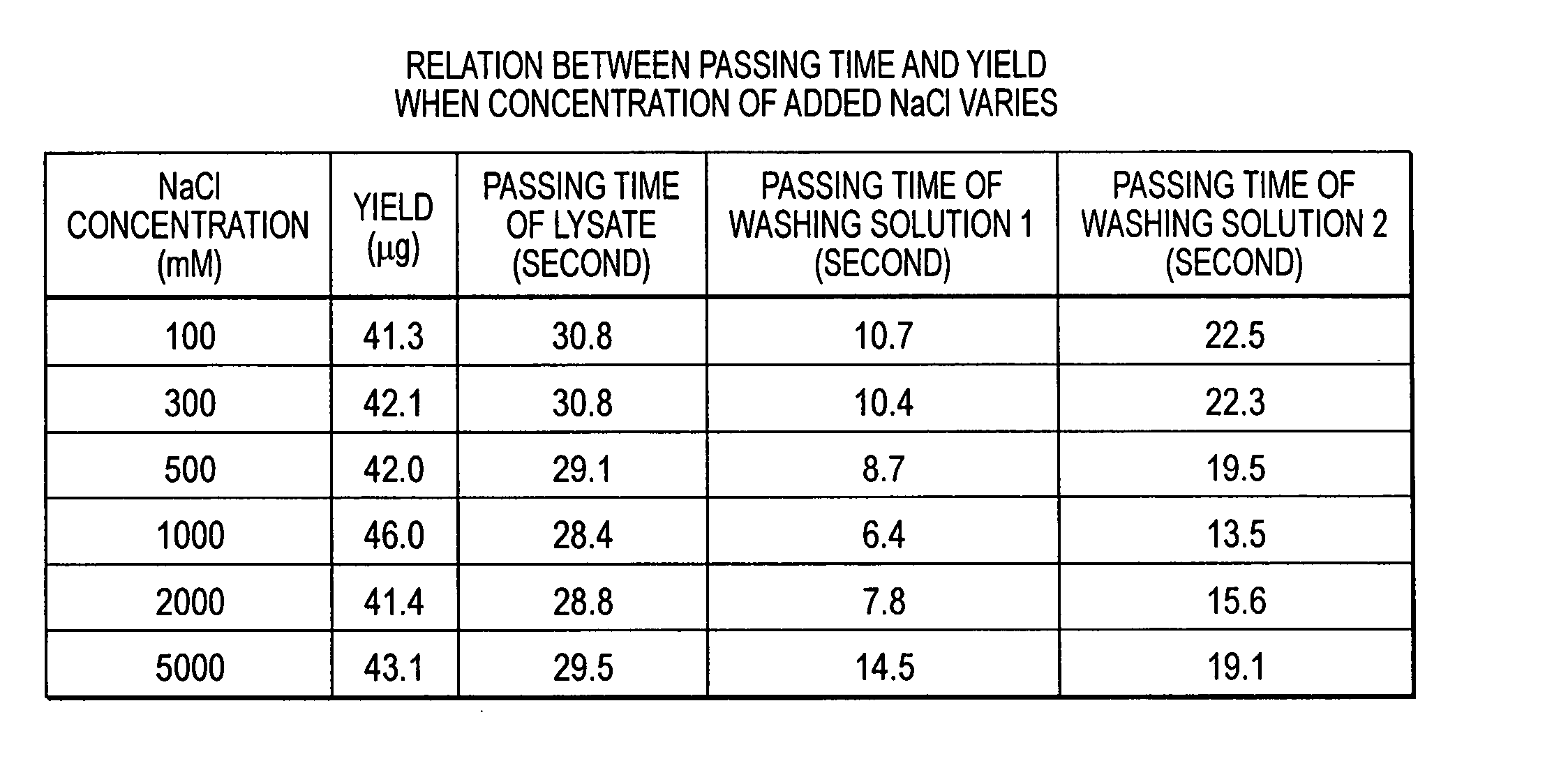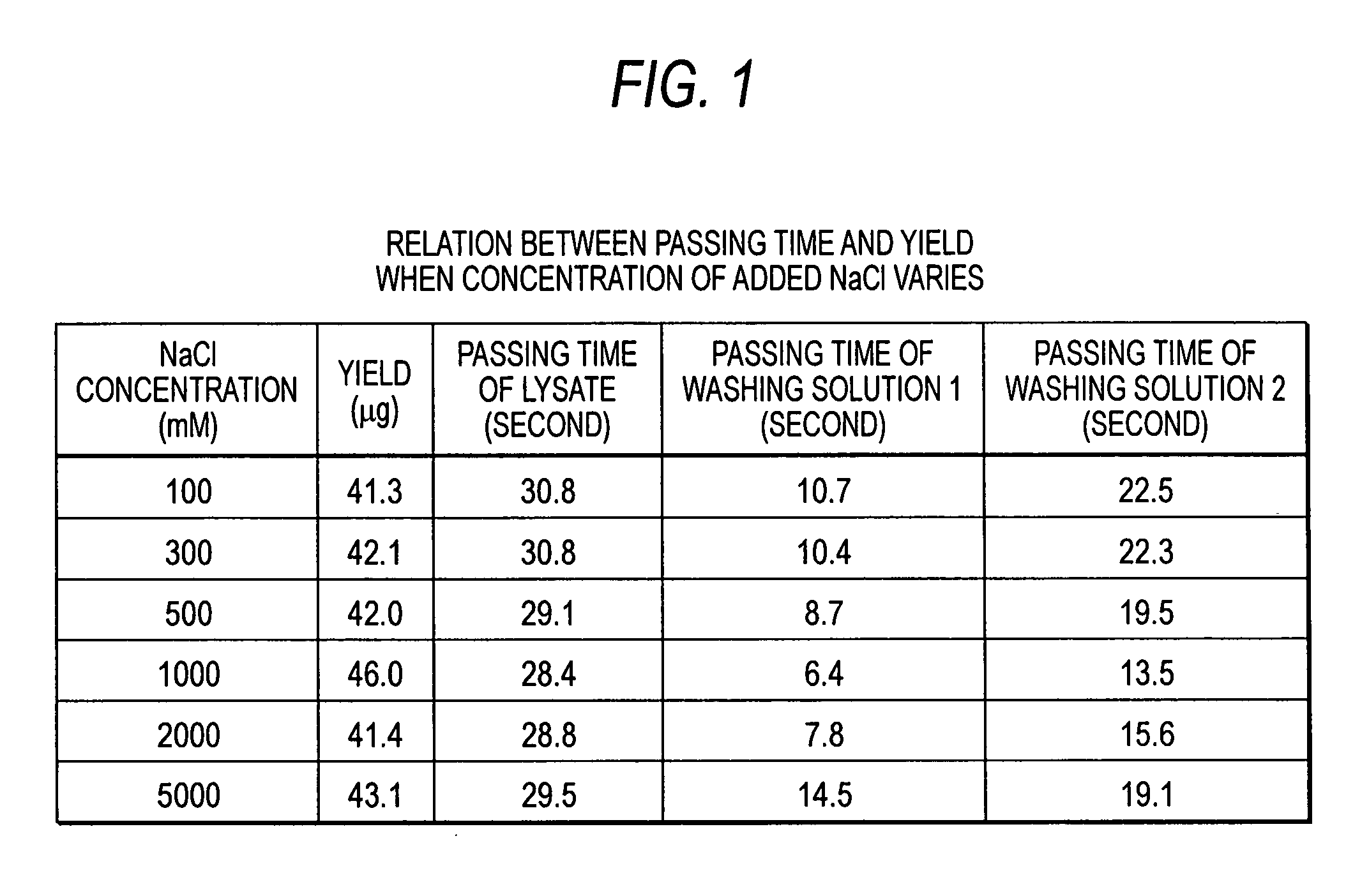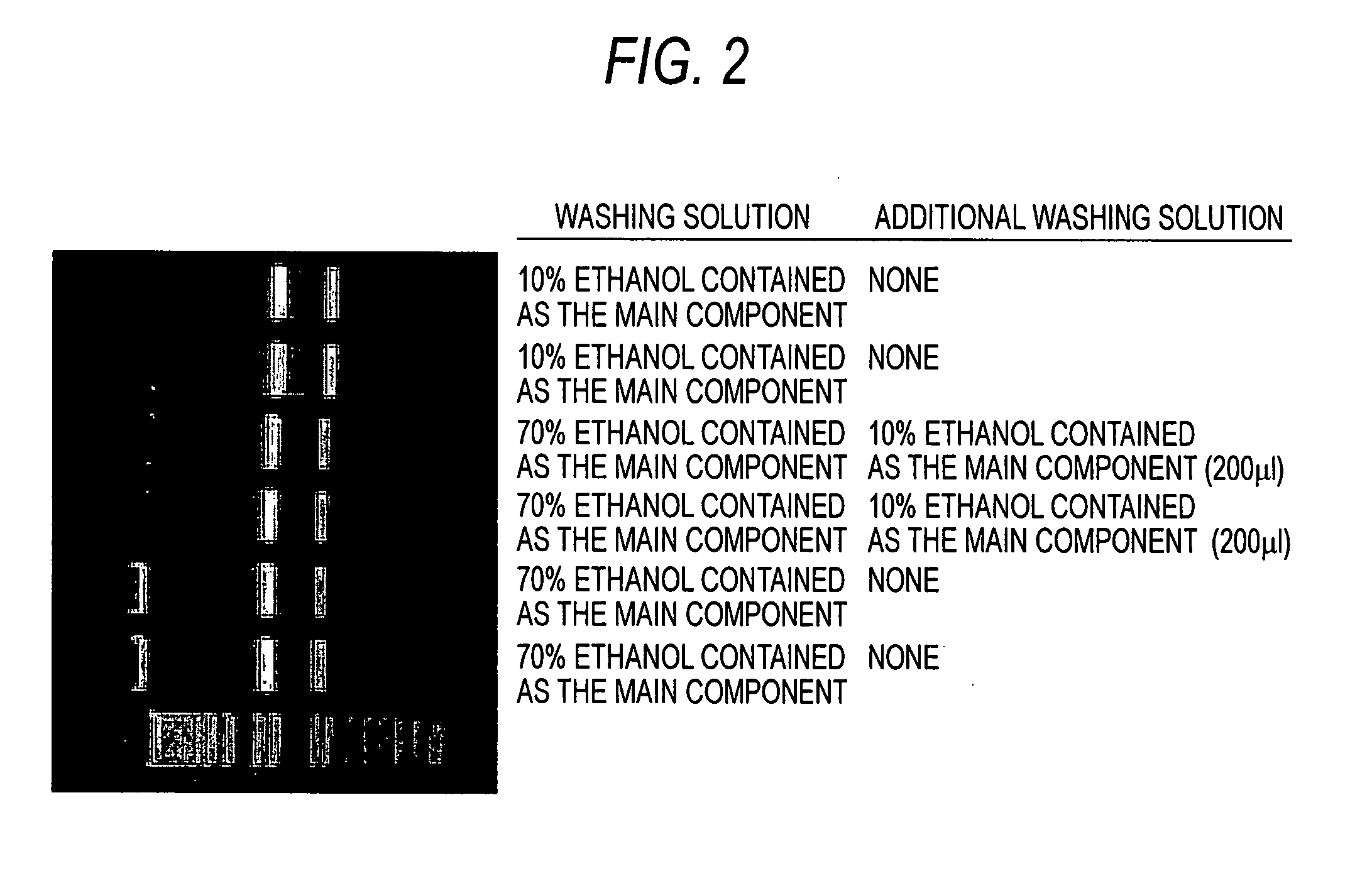Method for extracting nucleic acid
a nucleic acid and extraction method technology, applied in the field of nucleic acid extraction methods, can solve the problems of laborious procedures and skill, high cost, and simple methods, and achieve the effects of reducing impurities, reducing clogging, and high-purity nucleic acid
- Summary
- Abstract
- Description
- Claims
- Application Information
AI Technical Summary
Benefits of technology
Problems solved by technology
Method used
Image
Examples
example 1
Relation Between the Number of Washing Procedures with Washing Solution and the Passing Time During RNA Extraction
[0157] 30 μl of 0.5M Bis-Tris buffer, pH 6.5 was added to a frozen pellet of HL60 (at 5×106 cells) for dispersing the cells via pipetting. 540 μl of LRC (manufactured by Fuji Photo Film Co., Ltd. (now FUJIFILM Corporation)) was added as a lysing solution to lyse the cells, and the resulting mixture was immediately subjected to pipetting five times. Using Cute Mixer CM-1000 (manufactured by EYELA), one-minute agitation was done at 2,500 rpm, followed by spin down with centrifugation. 260 μl of high grade ethanol (manufactured by Wako Pure Chemical Co., Ltd.) was added for agitation with Cute Mixer CM-1000 at 2,500 rpm for one minute. Subsequently, centrifugation was done for spin down, to prepare a lysate solution.
[0158] After a NEXT cartridge (manufactured by Fuji Photo Film, Co., Ltd.; opening diameter of 7 mm), a washing solution (WRT) and a recovering solution (CRT)...
example 2
[0161] Amount of Impurities Contained in an Extract Solution in Case of the Increase of the Volume of a Washing Solution in the Latter Washing Procedures During RNA Extraction
[0162] 30 μl of 0.5M Bis-Tris buffer, pH 6.5 was added to a frozen pellet of HL60 (at 0.5×106 cells) for dispersing the cells via pipetting. 450 μl of a lysing solution containing guanidine thiocyanate as the main ingredient was added to lyse the cells, and the resulting mixture was immediately subjected to pipetting five times. Using Cute Mixer CM-1000 (manufactured by EYELA), one-minute agitation was done at 2,500 rpm, followed by spin down with centrifugation.
[0163] 195 μl of high grade ethanol was added for agitation with Cute Mixer CM-1000 at 2,500 rpm for one minute. Subsequently, centrifugation was done for spin down, to prepare a lysate solution. After a NEXT cartridge (manufactured by Fuji Photo Film, Co., Ltd.; opening diameter of 7 mm), a washing solution (WRT) and a recovering solution (CRT) were ...
example 3
Passing Time in Case of the Increase of the Volume of Washing Solution in the Latter Stage During RNA Extraction
[0165] 20 μl of PBS was added to a frozen pellet of HL60 (at 5×106 cells) for dispersing the cells via tapping. 400 μl of a lysing solution containing guanidine thiocyanate as the main component was added to lyse the cells, and the resulting mixture was immediately subjected to pipetting five times. Using Cute Mixer CM-1000 (manufactured by EYELA), one-minute agitation was done at 2,500 rpm, followed by spin down with centrifugation. 170 μl of high grade ethanol was added for agitation with Cute Mixer CM-1000 at 2,500 rpm for one minute. Subsequently, centrifugation was done for spin down, to prepare a lysate solution.
[0166] After a NEXT cartridge, a washing solution (WRT) and a recovering solution (CRT) were set in QuickGene-800, the lysate solution was placed in the NEXT cartridge, for extraction by the RNA mode of Quick Gene 800. In that case, washing count was preset...
PUM
| Property | Measurement | Unit |
|---|---|---|
| volume | aaaaa | aaaaa |
| pH | aaaaa | aaaaa |
| volume | aaaaa | aaaaa |
Abstract
Description
Claims
Application Information
 Login to View More
Login to View More - R&D
- Intellectual Property
- Life Sciences
- Materials
- Tech Scout
- Unparalleled Data Quality
- Higher Quality Content
- 60% Fewer Hallucinations
Browse by: Latest US Patents, China's latest patents, Technical Efficacy Thesaurus, Application Domain, Technology Topic, Popular Technical Reports.
© 2025 PatSnap. All rights reserved.Legal|Privacy policy|Modern Slavery Act Transparency Statement|Sitemap|About US| Contact US: help@patsnap.com



